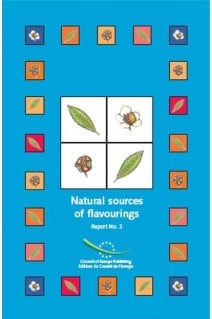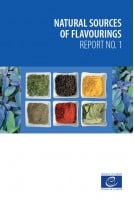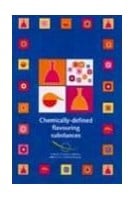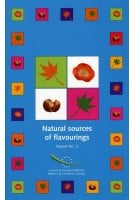The Committee of Experts on Flavouring Substances has engaged in a major toxicological evaluation of the safety-in-use of over 600 natural flavouring source materials. This is the second volume of these reports which provides safety-in-use evaluations of 60 source materials.Natural sources of flavourings are materials of vegetable or animal origin, whether or not they are normally consumed as food, from which flavourings may be obtained. The committee of experts has predominantly evaluated materials in the raw or dried state, with the exception of certain special products, such as vanilla, cocoa and black pepper, which are traditionally processed (e.g. fermented) before their use as source materials.Each source species is identified primarily by its systematic name based on the botanical nomenclature of Zander or, where the source species is not listed in that reference book, using that of Mansfeld. Source species not listed in either book are treated on a case-by-case basis. Synonyms in English, French, German, Italian, Spanish are noted under each respective language.Each datasheet indicates the parts used and provides a list of the "important constituents", including the known "active principles" and "other chemical components", found in each part of the plant and/or preparation used in flavourings. Where possible, the levels at which the various constituents are present in the parts/preparations are given and the main food categories in which parts/preparations are used are listed. The types of preparation made from each part are stated, e.g. oleoresin, extract, etc.Main toxicological data are indicated such as metabolism; sub-acute and sub-chronic toxicity; chronic toxicity; carcinogenicity; reproductive and teratogenicity studies; mutagenicity; other relevant studies, e.g. photosensitivity and beneficial effects.National and international evaluations are specified, together with the main references and databases used.
Alphabetical Index of the natural sources of flavourings
Allium ascalonicum Strand
Allium cepa L
Allium porrum L
Allium sativum L
Allium schoenoprasum L
Aloe barbadensis Mill
Aloysia triphylla (L'Herit.) Britt
Angelica sylvestris L
Asparagus officinalis L
Capsicum annuum L
Capsicum frutescens L
Coffea arabica L
Coffea canephora Pierre ex Froehner
Crocus sativus L
Cuminum cyminum L
Cymbopogon martinii (Roxb.) W. Wats, var. sofia
Dipteryx odorata (Aubl.) Willd
Eriodictyon californicum (Hook, et Arn) Tor
Gentiana acaulis L
Hamamelis virginiana L
Hedeoma pulegioides (L.) Pers
Hyssopus officinalis L
Iris florentina L
Iris germanica L
Iris pallida Lam
Leptospermum citratum Chall
Liquidambar styraciflua L
Litsea cubeba (Lour.) Pers
Malva sylvestris L
Marrubium vulgare L
Melaleuca leucadendron (L.) L.Mant
Melaleuca linariifolia Smith
Melissa officinalis L
Menyanthes trifoliata L
Myroxylon balsamum (L.) Harms
Myroxylon balsamum (L.) Harms var. pereirae
Myrrhis odorata (L.) Scop
Narcissus poeticus L
Nepeta cataria L
Paullinia cupana H.K.B
Petroselinum crispum (Mill.) Nym. ex A.W. Hill
Pimpinella anisum L
Pogostemon cablin (Blanco) Benth
Polianthes tuberosa L
Potentilla erecta (L) Raeusch
Pterocarpus santalinus L
Salvia lavandulifolia Vahl
Salvia sclarea L
Sambucus canadensis L
Sesamum indicum L.
Silybum Marianum (L.) Gaertn
Smilax aristolochiifolia Mill
Smilax officinalis Kunth in H.B.K
Smilax regelii Killip et C.V. Morton
Styrax benzoin Dryand
Uncaria gambir (Hunter) Roxb
Viburnum prunifolium L
Vitis vinifera L
Yucca filamentosa L
Yucca schidigera Roezl ex Ortigies







